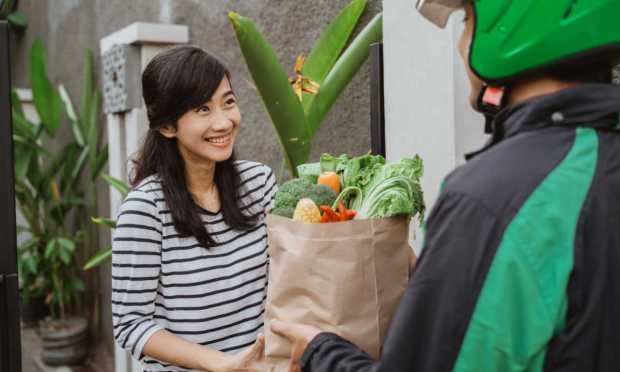Uber Leverages Its Platform to Out-do Grocery Delivery Competitors

As Uber courts grocery delivery partners, its multi-vertical model is proving to be a competitive weapon.
On Friday (Dec. 16), Uber Eats announced its latest such partnership, delivering from 250 of Midwestern retailer Meijer’s roughly 500 stores. In an interview with PYMNTS, Christian Freese, Uber’s head of grocery and new verticals across the U.S. and Canada, explained how the company’s platform model helps set its marketplace apart in the face of stiff competition from other restaurant and grocery aggregators.
“Uber’s biggest differentiator is our user base across mobility and delivery. We’re truly a one-tap destination to go-anywhere and get-anything platform,” Freese said. “Overall, I would say that what we’re hearing from retailers is that they’re looking to meet shoppers wherever they are, and many of them are using Uber and Uber Eats.”
Indeed, in the company’s third quarter earnings report in November, Uber touted 124 million active customers. In contrast, take competitor DoorDash. The aggregator did not reveal its monthly active user count in its most recent few earnings reports, but a year earlier, when Uber’s reached 118 million, DoorDash’s was at 25 million.
Indeed, a large share of the population is looking for more convenient food shopping options. Research from the latest edition of PYMNTS’ monthly ConnectedEconomy™ study, “ConnectedEconomy™ Monthly Report: The Gender Divide Edition,” which drew from a survey of more than 2,600 U.S. consumers in October, found that 43% of men and 35% of women order groceries online in advance for home delivery, and 42% and 28%, respectively use same-day delivery aggregators.
Get the study: ConnectedEconomy™ Monthly Report: The Gender Divide Edition
Additionally, findings from PYMNTS’ July study “ConnectedEconomy™ Monthly Report: The Rise Of The Smart Home,” which draws from surveys of nearly 2,700 U.S. consumers, found that in May, about 1 in 3 consumers made a purchase from a same-day delivery website such as Shipt, and the majority of them did so weekly or more.
Read the report: ConnectedEconomy™ Monthly Report: The Rise Of The Smart Home
“Grocers are overwhelmingly working towards an omnichannel strategy [and] to satisfy use cases from weekly shops to last-minute needs,” Freese noted. “Delivery plays an important part of that.”
Consequently, aggregators are in a race to onboard merchants and build out their grocery delivery capabilities, especially as leading players notice that engagement with any one vertical drives sales across verticals. For instance, DoorDash recently announced a partnership with Kroger to deliver flowers and sushi from the grocery giant, and Grubhub has been noting positive results from its own forays into the grocery space.
Looking ahead, Freese identified an opportunity similar to the one observed by General Mills CEO Jeff Harmening on a call with analysts Tuesday (Dec. 20) accompanying the company’s second-quarter fiscal 2023 earnings release — the chance to drive eCommerce sales with increasingly personalized digital experiences.
“We’re seeing [an] emphasis on the personalization of the grocery shopping experience online, whether that’s recommendation of certain items to the right consumer at the right moment in time or [curated] bundled item sets,” Freese said. “There’s a lot of opportunity ahead.”
